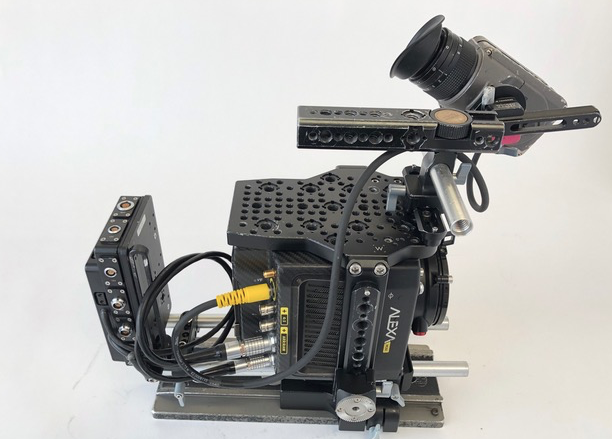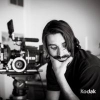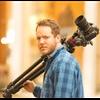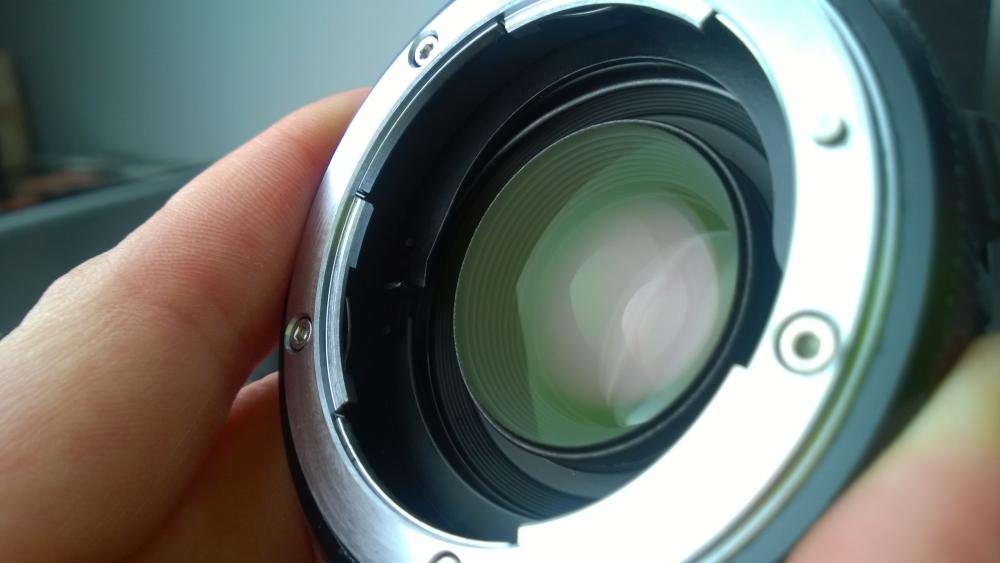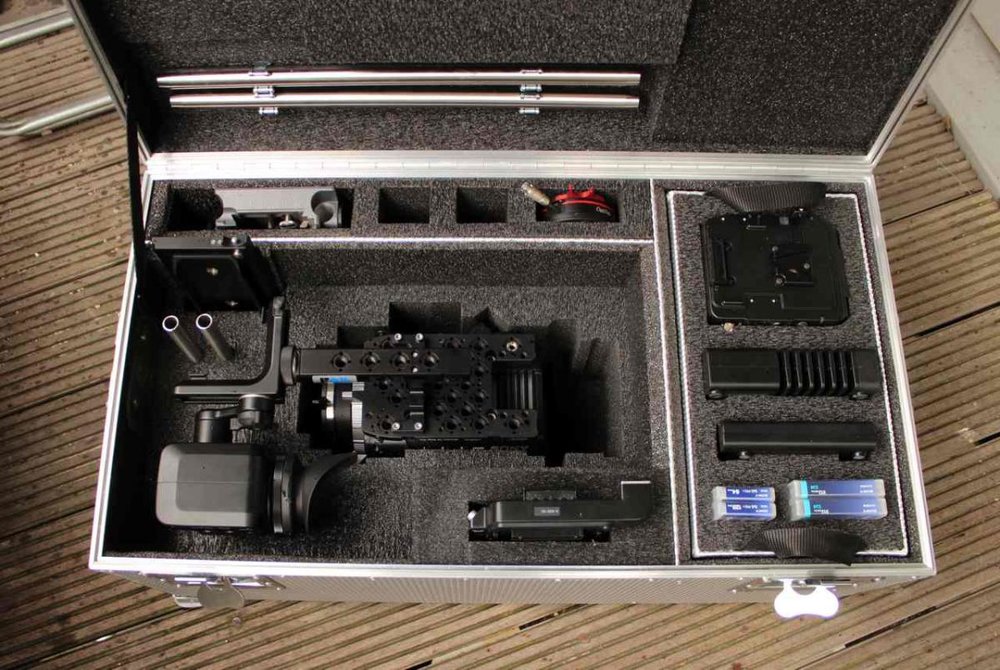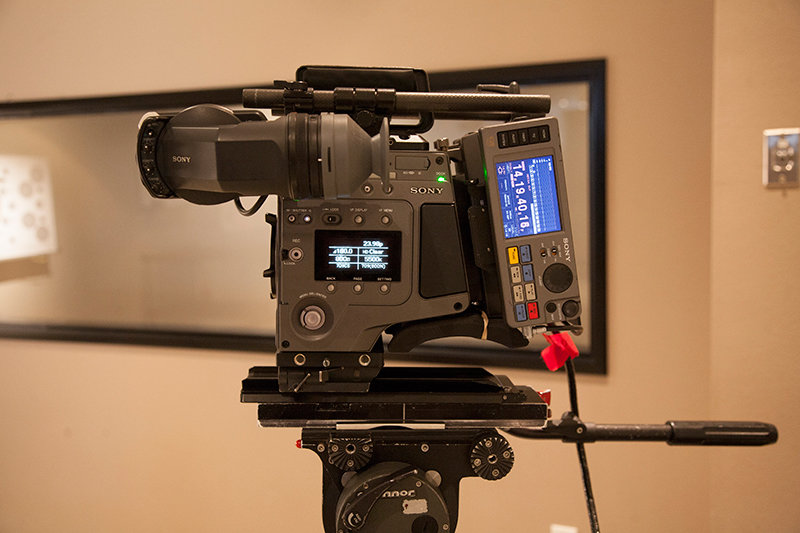Search the Community
Showing results for tags 'raw'.
-
So I’ve been shooting on the BMPCC 4K for the last couple months, my first proper cinema camera that I’ve owned. Each project I’ve shot with Blackmagic’s RAW setting which obviously means massive file sizes. I’m planning on playing with ProRes 422 to test on some shoots but was wondering: how much of a difference is there really between the two? I understand that RAW gives you more ability with things like highlight recovery, changing color temps and ISO in post, etc. But assuming you’re exposing correctly on the day and intentionally shooting with a particular WB, how big of a difference does it really make? ProRes would likely make for an easier post workflow due to file sizes, but I’m curious to hear your thoughts.
-
Need to Purchase : Alexa Mini w/4:3 & Raw License. Please email details to sales@broadcastsolutions.com
-
Hi, I am posting here for the first time, so little bit nervous. The topic might not be properly linked to aesthetics or techniques of Cinematography . Kindly let me know if this is not suitable subject (or has been discussed before). I was trying to dive into the term ‘ISO Invariance’ and I came across some videos and articles (linked below) which confused me even more. My understanding(might be incorrect) is that the voltage at pixel level ,when the photosite gets exposed to light, is very low and the Analog value is amplified by some factors then sent to the ADC,followed by De-Bayering, Chroma Subsampling etc. The gain of the voltage here should be linked to ISO we set and the factor will differ as we play around. Now for the RAW data we do have control in post to change the ISO , which implies that ISO is not a deciding factor like Color Temperature and not mapped on the footage.However, in the videos and articles I see that the tests are showing Photographic Cameras are not totally ISO invariant and they are introducing noise when set to higher ISO. Unfortunately I don’t own a high end Cinema Camera to test this and didn’t find anything related , so my question is : are cinema cameras really ISO invariant? If yes, should we care about setting up proper ISO on set ? If no, what’s the point of having an external control in post to modify it? https://photographylife.com/iso-invariance-explained Thanks in advance. ?
-
-
Hello Everybody, I sell my beloved RED Epic-M Dragon bought at the end of 2014. I unfortunately don't use it enough. I have been shooting much lighter in recent years and will therefore buy a less "high end" camera that is more suitable for projects where I am the only operator. The camera is in very good condition with few projects done with it. Low Hours: 730 hours I sell the whole kit for 11'000€ + Shipping The camera is with me in Geneva, Switzerland. Possibility to pick it up in France or other countries around Switzerland. I can send it in Europe by adding shipping and other fees. The kit for sale includes: - 1x RED Epic-M Dragon 6K brain - 1x Side SSD Module 1.8'' - 1x Minimag Side SSD Module - 1x Wooden Camera Cage - 1x RED Touch Pro 5.0 Monitor with Nato clamp - 1x RED Switchblade Pro - 1x Canon EF Mount - 1x RED Top Handle with Nato rail - 1x Backplate V-Mount Wooden Camera - 1x Baseplate 19mm Wooden Camera (Dovetail) - 2x Redmags 240GB 1.8'' - 1x REDmag reader USB 3.0 with cable - 1x C-Box Wooden Camera (not pictured) - 1x B-Box Wooden Camera - 1x A-Box Wooden Camera - 2x 19mm RED rods Carbon - 1x Dovetail Wooden Camera - 1x OLPF Skin tone-Highlights - 1x OLPF Low Light Optimized - 1x OLPF IR Spectrum Kippertie - 1x LEMO Cinecoil for monitor - 1x Monitor LEMO RED (not pictured) - 1x RED Adaptor Module (not pictured) - 1x Box RED EPIC-M Dragon - 1x Pelicase 1510 Green Link Google Drive with pictures: https://drive.google.com/open?id=1aikF-4uL56a3YHK3udvbv2fHt2Es39A0 Cheers, Blaise
-
Hi All, I'm selling 35mm short end recans. I came into this stock a few years back, a friend worked on the Wolf of Wall Street and was able to get me there recans. I thought I would use them on a project by now but haven't got around to it and they have been kept in safe storage. I'm looking to sell footage at below price points: Kodak 5219 Vision 3 500T Color Negative - 5,817ft (Price = .25/ft) Kodak 5260 Vision 2 500T Color Negative - 400ft (Price = .20/ft) Kodak 5212 Vision 2 100T Color Negative - 3,687ft (Price = .20/ft) Kodak 5201 Vision 2 50D Color Negative - 400ft (Price = .20/ft) Kodak 5217 Vision 2 200T Color Negative - 1,395ft (Price = .20/ft) Fuji 8583 - 400ft (Price = .20/ft) Fuji 8563 - 400ft (Price = .20/ft) All recans have over 250 ft of film, some are full 400ft recans. Please PM me or email hschleiff@gmail.com if interested in purchasing. I am based in NYC, but can ship if needed. Best, Harry
-
Not to be confused with a ‘stylized look' LUT – I created the BozBMDFilm_to_Rec709 Utility LUT to bring out the organic contrast and color values captured by the BMCC / BMPCC in Film LOG or RAW modes. In addition, the LUT strives to preserve highlight and shadow detail [with emphasis on softer highlight roll off] while safeguarding image quality and integrity. [RAW video by John Brawley] Though it's not free, It's still cheaper than a Golden Arches Meal and definitely worth a look even if it's just to see more examples of how the LUT works. Download Page: https://bulentozdemirfilms.wordpress.com/downloads/bmcc-bmpcc-bozbmdfilm-to-rec709-lut/
- 7 replies
-
- blackmagic design
- (and 8 more)
-
I've shot a lot of stills and have some experience with Canon raw files. How do these compare with black magic raw video? The stills are higher resolution obviously but is the dynamic range comparable? Does Blackmagic raw have better dynamic range? Please advise. Thanks!
- 14 replies
-
Is it even possible to achieve a decent result when color grading non RAW footage. Is it a common thing to do to color grade non RAW footage? How much of what I see at the cinema is shot RAW?
-
I purchased the sony fs700. it is a great super slow motion camera. I've been waiting for the 6.4 update from Atomos. They said it will support sony raw. however i'm not sure if it is going to support the super slow motion or not. Sony FS700 shoot up to 240fs @2k. please share your thought and opinions.
-
I had been using a Canon t5i for years and was pretty disappointed in it. I had sworn off DSLRs for video until I saw RAW footage from my friends 7D after he installed magic lantern. When i saw the specs for the 7D Mark II my mind was a buzz with the possibilities that where now open to magic lantern and i bought one thinking the ML community would be working on it... How sadly mistaking I was... The ML forums are filled with Mark II owners pleading for a Magic lantern port and ML devs basically telling them to go screw themselves... Now i'm stuck with a camera only slightly better than the one I had before with the only possible saving grace being the HDMI out. Supposedly it's a clean, uncompressed 8bit out but i haven't found much information on it or people recording from it. I don't like the idea of having to spend more money to bypass Canons terrible compression but it's better than nothing. But before I do I want to make sure i'm not wasting my time. Is the HDMI streem good enough to justify the cost of an external recorder. If so what recorders do you recomend? I've been looking at The Blackmagic HyperDeck Shuttle 2 which records RAW and the Atomos Ninja 2 which only records ProRes. Any thoughts are appreciated. Thanks in advance.
-
Good evening guys. So, I am looking into optimizing what I get out of my RAW files. And I am not sure I am doing that right now. My workflow now, is 2,5k RAW in Resolve, and then exporting for further editing in Premiere and AFX. What kind of bitrate would you use going from Resolve into Premiere? And what is sufficient for web and cinema use? Thanks!
-
Blackmagic Production Camera 4k ef mount Like new with original box. Only 1 day of use. Perfect condition MAKE AN OFFER (usd) 4K Super 35mm Sensor with Global Shutter Records 4K (3840x2160) & HD (1920x1080) ProRes 422 Codecs (HQ, 422, LT, & Proxy) Compressed CinemaDNG RAW (4000x2160) Canon EF Lens Mount Built-In SSD Recorder 6G-SDI Output for Ultra HD via One Cable 5" Touchscreen LCD (800x480 Resolution) In the box: Blackmagic Design Production Camera 4K (EF Mount) Sun Shield Camera Strap Turret Dust Cap 12V AC Adapter Possibility of buying a Kingston HyperX Savage - Solid state drive - 240 GB with the camera. Buyer pay shipping cost. I live in Montreal Canada. email me @ js.francoeur@hotmail.com
-
- blackmagic
- 4k
-
(and 3 more)
Tagged with:
-
Hi everybody, I'm reading David Stump's digital cinematography manual and I need a couple of clarification. Is BAYER FILTER ARRAY (or any other color filter mosaic) used in both RAW or RGB signal output cameras? And does it have something to do with it or that's just a way that the sensor read the lights and it's independent from the file format? It's kind of confusing to me because I wonder if the Bayer CFA is used only when shooting raw or if it's just a system that is independent from the FILE FORMAT. Thanks in advance for the help!
-
I have a mint condition Blackmagic Pocket Cinema Camera and Blackmagic Pocket Camera to Nikon G Speedbooster with Accessories kit for sale. Very lightly used in mint condition with 4x batteries +charger and 4x 64gb Sandisk Extreme Pro 95mb/s SDXC Cards. $1150.00 paypal + 3% paypal fee. Free shipping within lower 48 continental US States. Please send serious inquiries to mrak1979@yahoo.com. Thanks
- 4 replies
-
- blackmagic
- pocket cinema camera
-
(and 2 more)
Tagged with:
-
Hello friends and fellow cinematographers, Not sure if anyone have posted about this topic but here it goes... Other than being able to shoot RAW from the Alexa, practically and to-the-eyes and after all the proper post correction and all, is there a huge difference between raw from Alexa and the proress 4444 XQ from the Amira? I'm sure there is a difference, but is the difference too great or are most people just being an unconscious pixel-peepers? I feel much of the discussion have put too much attention and emphasize on this issues and on the argument of which is 'truely' cinematic or fitting for cinematic use and I just want to get a simple answer once and for all. Thanks! Dave
- 1 reply
-
- Arri Amira
- Alexa
-
(and 2 more)
Tagged with:
-
Digital cameras can do some amazing things nowadays considering where they were just even five years ago. One thing I sometimes struggle to understand is how these newer cameras with 13+ stops of dynamic range are actually quantizing that information in the camera body. One thing we know from linear A-to-D quantization is that your dynamic range is a function of the number of bits of the converter chip. A 14-bit ADC can store, at best (and ignoring noise for the moment), 14 stops of dynamic range. However, when we do introduce noise into the mix (sensor, transfer charge, ADC, etc.) and linearity errors, there really isn't 14 meaningful stops of dynamic range. I did a lot of research on pipeline ADCs (which I believe are the correct type used) and the best one I could find, as defined by the measured ENOB (effective number of bits), was the 16-bit ADS5560 ADC from Texas Instruments; it measured an impressive 13.5 bits. If most modern cameras, Alexa especially, are using 14-bit ADCs, how are they deriving 14 stops of dynamic range? I read that the Alexa has some dual gain architecture, but how do you simultaneously apply different gain settings to an incoming voltage without distorting the signal? A pretty good read through regarding this technology can be found at this Andor Technology Learning Academy article. Call me a little skeptical if you will. Not to pick on RED, but for the longest time, they advertised the Mysterium-X sensor as having 13.5 stops (by their own testing). Of course, many of the first sensors were used in RED One bodies, which only have 12-bit ADCs. Given that fact, how were they measuring 13.5 in the real world? Now, with respect to linear to log coding, some cameras are opting for this type of conversion before storing the data on memory cards; the Alexa and cameras that use Cineform RAW come to mind. If logarithmic coding is understood to mean that each stop gets an equal number of values, aren't the camera processors (FPGA/ASIC) merely interpolating data like crazy in the low end? Let's compare one 14-stop camera that stores data linearly and one that stores data logarithmically: In a 14-bit ADC camera, the brightest stop is represented by 8192 code values (16383-8192), the next brighest is represented by 4096 code values (8191-4096), and so on and so forth. The darkest stop (-13 below) is only represented by 2 values (1 or 0). That's not a lot of information to work with. Meanwhile, on our other camera, 14-stops would each get ~73 code values (2^10 = 1024 then divided equally by 14) if we assume there is a 14-bit to 10-bit linear-to-log transform. As you can see here, the brighter stops are more efficiently coded because we don't need ~8000 values to see a difference, but the low end gets an excess of code values when there weren't very many to begin with. So I guess my question is, is it better to do straight linear A-to-D coding off the sensor and do logarithmic operations at a later time or is it better to do logarithmic conversion in camera to save bandwidth when recording to memory cards? Panavision's solution, Panalog, can show the relationship between linear light values and logarithmic values after conversion in this graph: On a slightly related note, why do digital camera ADCs have a linear response in the first place? Why can't someone engineer one with a logarithmic response to light like film? The closest thing I've read about is the hybrid LINLOG Technology at Photon Focus which seems like a rather hackneyed approach. If any engineers want to hop in here, I'd be much obliged--or if your name is Alan Lasky, Phil Rhodes, or John Sprung; that is, anyone with a history of technical knowledge on display here. Thanks.
-
Hi guys, Selling my F55 kit. Hours are around 1050. I'm looking for £20,500 (+ 20% vat if applicable) for the list below. All beautifully boxed by Case Design. Photos attached, although I don't have the Arri Pro Support set that you see in the photos anymore. Sony F55 + DVF-EL100 OLED Viewfinder 4 x Sony Olivine Batteries Sony BC-L90 Battery Charger Sony SxS Pro+ Card128GB R5 Raw Recorder (Hours: 370) 2 x Sony AXS Card 512GB AXS Card Reader Rigidised Aluminium Camera & Accessories Case with lazer-cut interior Rigidised Aluminium Battery and Charger Case (can accommodate 6 Olivine batteries) Cheers, Jamie Kennerley jamiekennerley@hotmail.com 07863 180 802
-
Sony F65 Camera Package with Media. Please see the list below. Serious inquires only. If you know about the camera, but you are not totally familiar with all of the items below please email me. Sony F65 Body 1 F65 EVF and EVF Mounting Plate 1 Sony Riser Plate 1 Shoulder Pad 1 Sony F65 R4 Recorder 1 AB Battery Plate 1 V-Mount Shoe 1 Control Panel 1 2x 9pL to 9pL Cable 1 Accessory Bracket 1 Solid Camera 1/20 and 3/8” Side Mounted Cheese Plate 1 V-lock Connectors 2 4 2-pin, 4 3-pin accessory breakout box for 24V and 12V Power 1 (3-pin Fisher 24volt – 2-pin Lemo 12 Volt Connectors) Arri BP-9 1 Arri 12-Inch Dovetail 1 512 High Speed SR Memory Card (Black) 3 256 High Speed SR Memory Card (Black) 1 AC Adapter/ Power Cable 1 Frezzi Universal Juice Box 1 2x 10' 8pL(m) to 8pL(f) Power Cable 1 Anton Bauer Hytron 140w Battery 4 Anton Bauer Quad Charger 1 Sony PC4 Downloading Station with 10GigE Option 1 AC Adapter/ Power Cable 1 Sony SRD-1 1 **All Equipment is provided with hard cases or Pelicans System Hours: 697 Continuous 145 Periodic Please see images of the camera package with the link below: http://bit.ly/1FDvexT sean@3riveproductions.com
-
- Digital Cinema
- Sony
-
(and 4 more)
Tagged with:
-
I recently posted this to lighting then realized this may be a better place to pose the question. I'm new to the forum and can't figure out how to delete posts so I apologize for any repetition. Anyways, I recently shot a music video and have run into a bit of an issue with the highlights. One of the hero props on this one was a set of floating, glowing orbs a la John Carpenters "Starman". The characters had them in most scenes. Images attached. I was shooting on a Sony F5 with the Raw recorder. We also had proxies at XAVC 2k going to SXS cards. I rated the camera at 1250 most of the time to lessen noise, but when dealing with extreme highlights went to 2000 to have the most headroom. No LUTS were baked in, and I shot S-LOG2 Both the proxies and the RAW recordings have this issue. It shows up in Sony RAW Viewer and in Premiere CC. It shows up when looking at the RAWs and the SXS XAVC proxies. We decided early on to fly an actual LED light source on strings and do our best to hide the wires (which were also powering the orbs) It turned out great and we were ecstatic on set. Being able to key light with a moving source that was also a prop was amazing. However, when looking closer at the captured footage we found that the banding and pixelation around the orbs was terrible, especially when pushing the exposure towards the dark end. Quick movement seems to accentuate the issue. The odd thing is that the frames themselves seem fine, only when playing back do they look odd. The paused frames are clean of banding and posterization. I figured with 16BIT RAW we would be fine. It was obvious we were clipping the highlights. We tried to do so whenever possible to avoid too much compositing. Most modern digital cinema cameras aren't film....but highlight roll of is quite decent nowadays. What I wasn't expecting was terrible banding and posterization. Here is a clip (prores export, not de-squeezed, Slog) that shows the worst of it. It happens a lot. You have to watch in HD to notice the issue. https://youtu.be/vbKAWkfgCA8 Notice the posterization on the orb as it descends and on his face as it crosses around his back. We had planned to composite a VFX orb over some of the blown white highlights anyways. So, I would imagine that smoothing the banding in post might be an option, but it even shows up on hands and faces that get too close to the clipped highlights, as seen in this clip. I have no idea how to fix this issue. Is it something debearing or reincoding may fix or am I just out of luck? Im no expert, but I assumed the camera would be able to handle some blown highlights. After all, clipping windows, little hot spots, and clouds can look fine on this camera in my experience. All of my research pointed to the ability to wrangle down highlights in post. If anyone has any helpful words it would be most appreciated. Im not the most tech savvy at this point in my career, and even if this project is unfortunately hurt by this issue I would love to know why it happened and how to avoid it in the future. Or if anyone has any pointers towards a fix/workaround. My hope is that is an issue with post processing and not something that the raw recorder or F5 did internally...Like I said, the frames themselves are clear of the issue, it is only when you hit play that the digital garbage appears. Thanks so much for your time!
-
Hello, For a short fiction, I will shoot a sequence shot: a scene where two people talk while playing pool in a dark pool center (by day, we'll get some sunlight through the windows). Probably with a stabiliser like the DJI Ronin or Easy Rig. Since I wish not to use too much lighting, I'm leaning towards 2,5 K or 4K ≥10-bit RAW, with or without an external recorder. Since I would be often moving randomly so I'm looking for continuous autofocus. Which cameras combine all those requirements? Thank you for your help! Simon
- 4 replies
-
- sequence shot
- raw
-
(and 2 more)
Tagged with:
-
Hello, I've recently shot a short film on a red epic in 5K raw. I've been told that .RED footage can be directly imported into adobe premiere, but that it would require a powerful system to edit. Is it necessary to have a good system to edit the footage ? And if that is, would I have to transcode the footage into a lower format (such as prores) to be able to edit ? Thank you for your time.
-
I'm planning to shoot my next film, "Self Help" on DVX100B, Andromeda, Reel Stream, 4:4:4. I bough a barely used gear from a Texas based production comany that went bust. No idea how to use it but I have a manual. That's a start :) Anyway if there are any DP's out there that can share their experience or give advice then that would be well appreciated. When the time comes we'll be looking for a DP but until now I just wanted to shoot some tests before I decide to shoot the film on andro instead of S16mm Aaton. Here's a photo of it: http://www.ivan-samu...-for-self-help- Ta!
-
I'm using an arri alexa, recording to Odyssey 7Q, Raw. Connected by sdi cable which from my understanding should be giving embedded audio. I see the levels at the top right of the 7q when I'm recording. Later, once it's brought in, in each arri raw folder there is an accompying .Wav file. But when I check that file there are no .wav forms present. There arn't a lot of audio setting options on the 7Q, not sure why I'm not getting it. Any ideas?
-
I've been working on some experimental projection of my artwork and made this short as a proof of concept mostly for me. I plan on incorporating more story soon. Using the 5D Mark III with ML Raw has been key. The low light capabilities really help me get the results I want.
- 2 replies
-
- short
- experimental
-
(and 1 more)
Tagged with:





